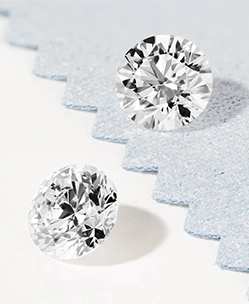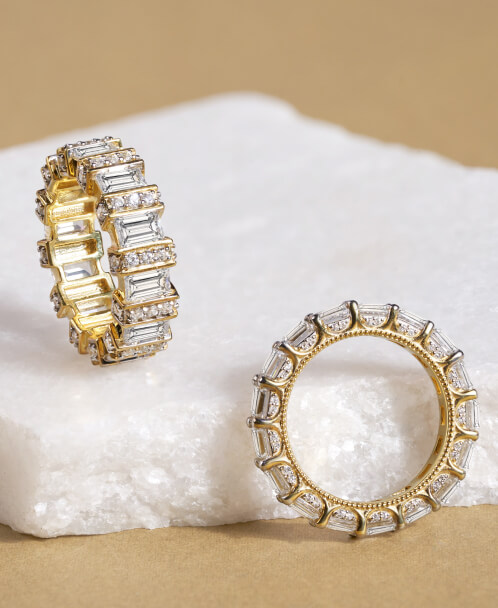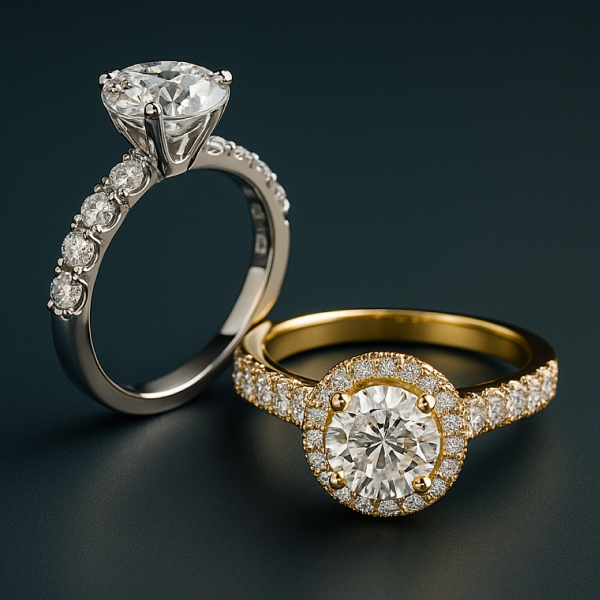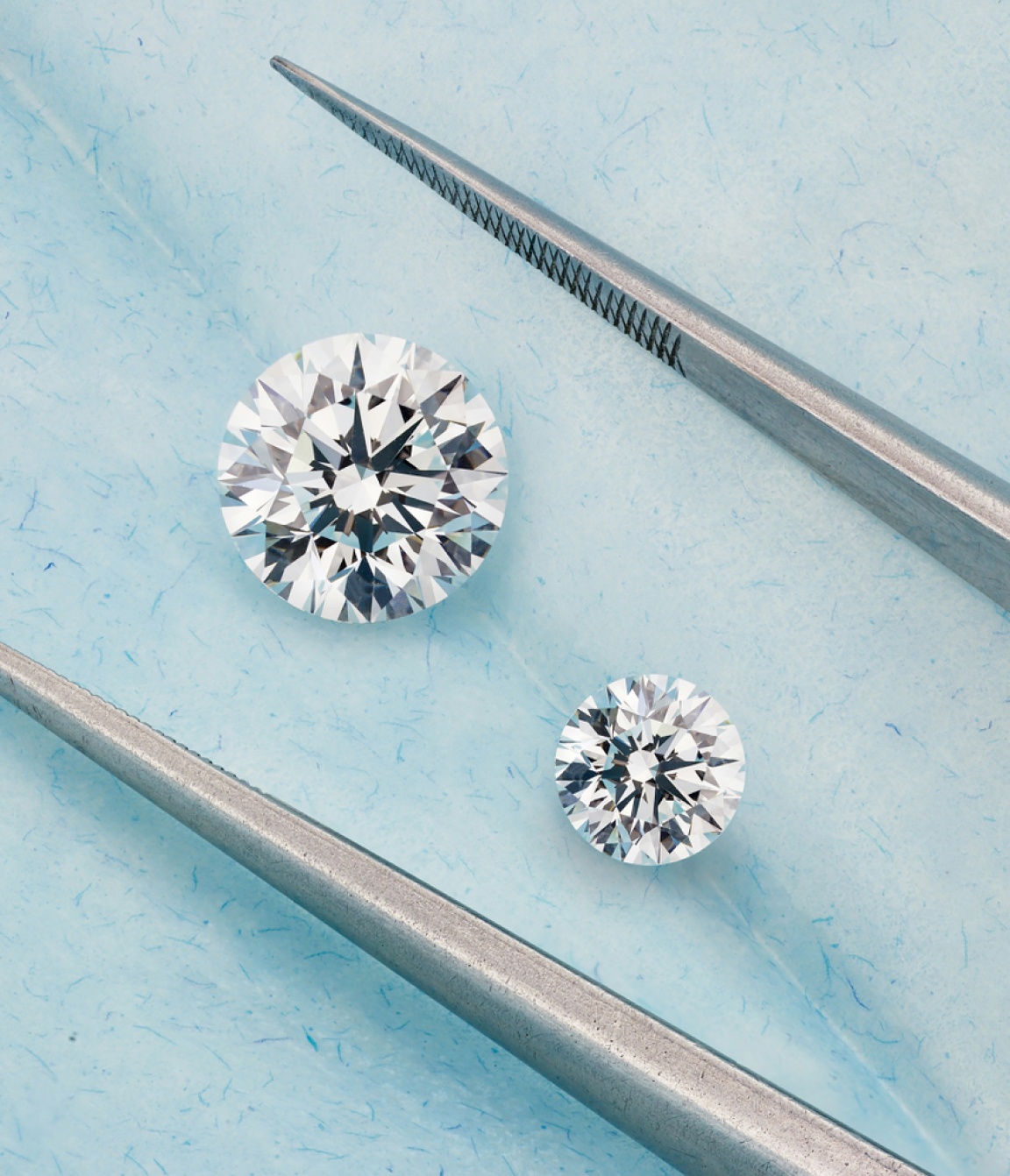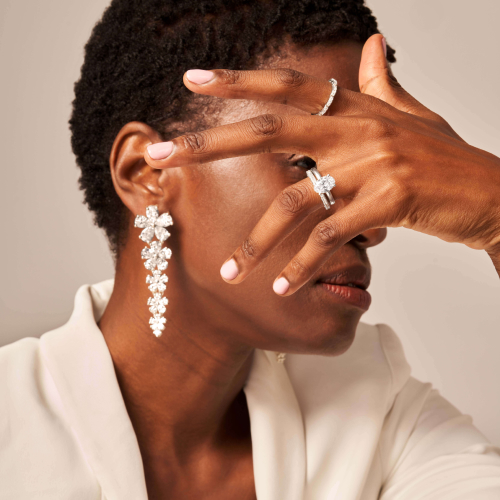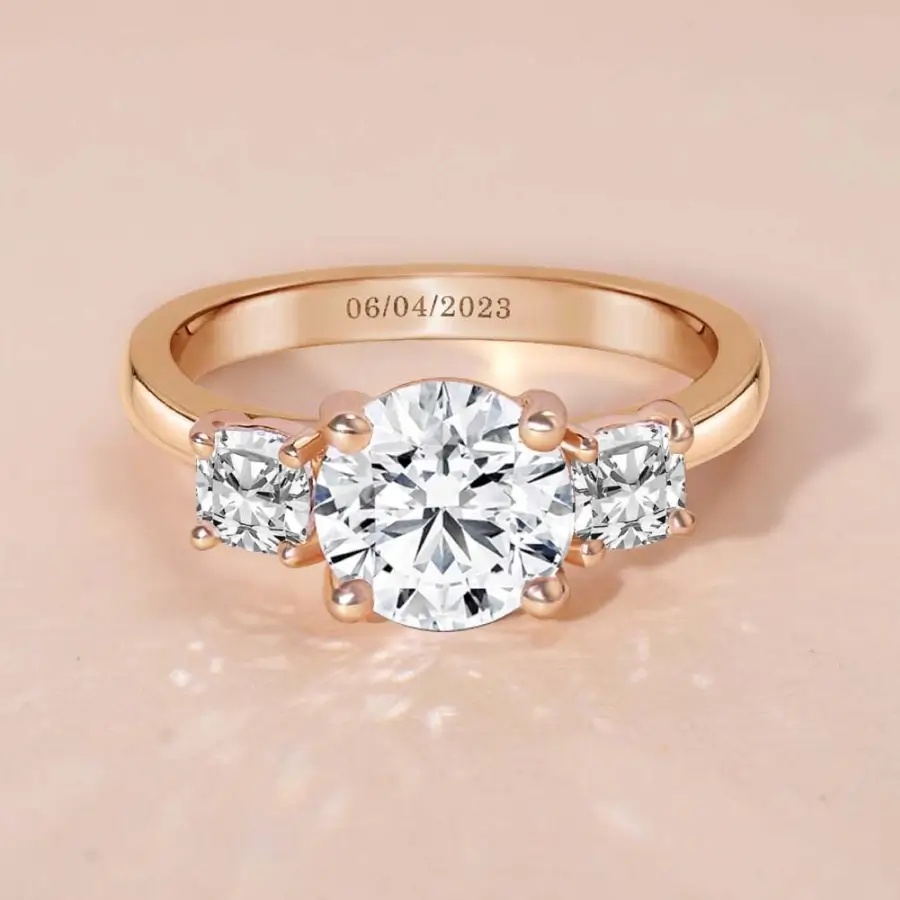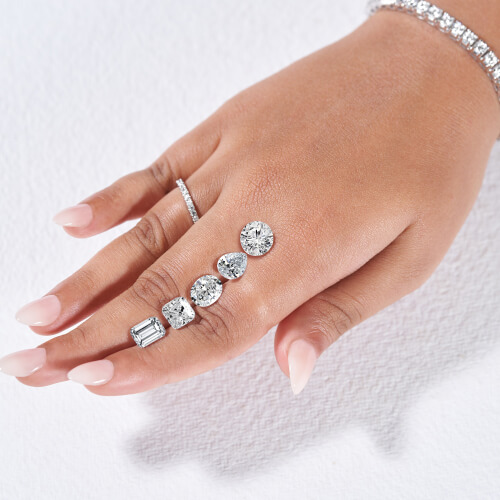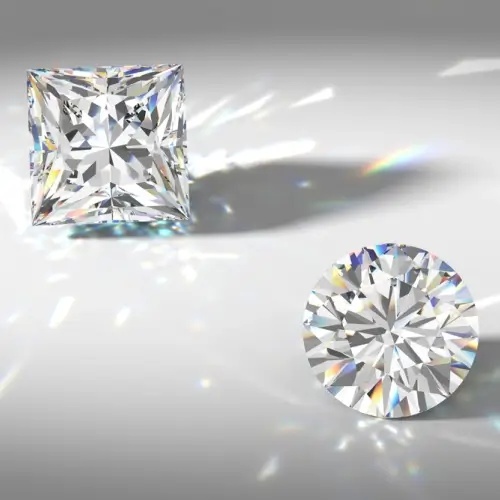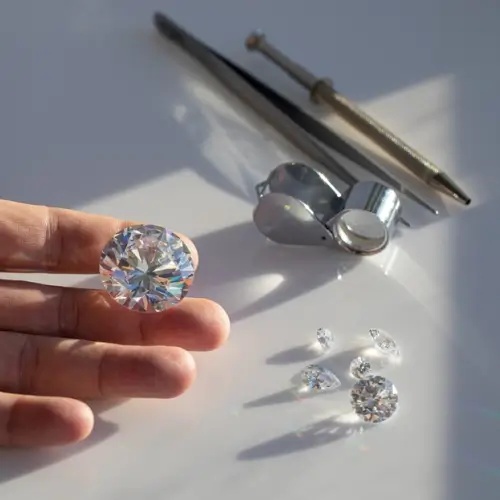Moissanite vs Lab Diamond. Which one is the better choice? A question we shall answer in the blog, but before we do, let’s talk… Diamonds. Carbon is one of the universe's building blocks, present on earth. It is an element that exists in its purest form, as a diamond, made of 99.5% pure carbon. And yet, no other gemstone in history has seen blood baths and wars waged for staking a claim to retrieve this precious gem from the earth.
The ethical and ecological considerations over mining have weighed heavily on prospectors and consumers alike. Movies like Blood Diamond, Gold, Outland, etc., have contributed to the narrative that mining and prospecting for diamonds are indeed evil. And yet, what would be the alternative to this laborious, perilous activity, if not mining? The answer to this question came in the late 1980’s when companies began replicating the earth's natural chemical environment in a laboratory.
Table of Contents
Moissanite Vs. Lab Diamond: Brief History of Both
The first HPHT gem-quality diamond was created in 1999 by General Electric. Since then, diamonds have been grown in laboratories, which are physically and optically identical, to the natural, mined gemstones. The GIA, IGI, SGL, and other international accreditation institutions also agree, as they assess natural and lab diamonds on the same 4C's, including carat weights.

Consumers often mistake the moissanite to be a kind of diamond. Moissanite may look like a diamond, yet the chemical, optical and physical structures are entirely different. Discovered and named by Henri Moissan, Henri first found the moissanite in meteoric rock samples from Arizona, USA, in 1893. He mistook the mineral for a diamond, yet he was not entirely wrong! To understand the distinction, we must first look at what makes both these gemstones different.
What Is a Lab Grown Diamond?
Before we answer the question ‘What is a Lab Grown Diamond?’, you should know that this gemstone is a great thermal conductor and electric insulator, with a melting point of 3550℃, occurring naturally in cubic form. The brilliance and fire of this magnificent gemstone owes its shine to a refractive index of 2.417 and a dispersion of 0.044. The diamond has poor electricity conduction and is among the most efficient thermal conductors of all minerals.
A perfect 10 on the Moh’s scale, this gem is 99.5% pure carbon, as is the lab-grown variety, with 0.5% making up the trace elements. A lab-grown diamond is created in the controlled settings of a laboratory that emulates the natural process of the earth through the Chemical Vapor Deposition(CVD) or High-Pressure High Temperature (HPHT) process. Yet, the most significant benefit of this lab-grown gemstone is that they are 100% eco-friendly, ethically sourced, and conflict-free! The mining process can ravage the environment with deforestation, soil erosion, and various environmental hazards that are completely avoided with lab-grown diamonds.

SHOP Lab Grown Diamond
These considerations play a crucial role in sustainable business practices, especially emphasizing the reduction of carbon footprint and greenhouse gases. And the benefit of the cost savings of a labor-intensive activity like mining is passed directly onto the consumer, with the lab diamond. Depending on your retailer, a 50% price difference between a lab-grown and a natural, mined diamond makes a choice easier. When compared to lab diamonds and moissanite, the better the quality of the moissanite, the greater the price variance. This means, as a buyer, you could actually buy a lab diamond at the cost of a Charles and Colvard moissanite! The moissanite can be of superlative quality too, as is the case with Charles Colvard's Forever Classic collection, whose price is comparable to a lab diamond of similar cut, grade, carat, and color.
Moissanites have an appeal of their own, for people who like the rainbow hues of brilliance. As a customer, I would want to ensure I have gained maximum value for my investment. Even with an almost negligible price difference, the moissanite and lab diamond cannot be equals. A lab diamond is a diamond, with appreciable value. This would be important to remember when making the final purchase decision, depending on the budget and value prioritization.
What Is a Moissanite Diamond?
The term 'Moissanite Diamond' is a misnomer. Most people do not read the fine text when making a purchase! There is no similarity between the two stones, beyond the bare physical resemblance, as is the case with most simulants. A diamond, whether lab-grown or mined, is a real gemstone. Whereas, even if referred to as a moissanite diamond, the gem is NOT even close! Although they can look the same, these two gemstones have no chemical, physical or optical similarities. The moissanite stone is an excellent simulant! Natural Moissanite is made of Silicon Carbide, part carbon, and part silicon, with 70.04% Silicon and 29.96% Carbon, unlike the real gemstone. And yet, set in an engagement ring, one can be hard pressed to distinguish between a diamond engagement ring and a moissanite engagement ring. In comparison to a solitaire of the same size, the moissanite will have better sparkle and brilliance. And yet, it is not even close to being the real gem.

The Manufacturing Process of Moissanites and Lab Diamonds
For a diamond to form in nature, temperature and pressure exert over an atom of pure carbon over time, which is eventually mined. In the laboratory, a diamond seed is the starting point, subjected to either the High-Pressure High Temperature (HPHT) or Chemical Vapor Deposition (CVD) processes to yield a rough diamond. The rough cabochon, from any of these processes, has inclusions, graining, and strain patterns, albeit of different types. However, the clarity of a lab-grown diamond is far better than that of a natural gem! There are fewer foreign particles or contaminants in the lab process than in nature, so a lab-grown diamond can have a better sparkle when compared to a similar natural, mined stone of similar shape, cut, clarity, and color. There is no difference between the gem created through the CVD/HPHT process, when compared to a natural, earth-mined one.

When it comes to moissanite, it should be noted that there is no viable source of natural moissanite. All moissanites available today are grown in laboratories by companies like Charles Colvard. The moissanite stone is an excellent simulant, akin to the cubic zirconia, yet not the actual gemstone. The diamond, whether natural or lab-grown, has an appeal and endurance that goes beyond time. Diamond jewelry can be worn throughout life and passed on, from generation to generation, as a favorite of royalty, connoisseurs, collectors, and consumers, through the ages.
Moissanite or Lab Diamond: Which One Should You Choose?
So still wondering which is a better pick? Diamonds have made history for their value and beauty, which puts all other gems to shade, including the moissanite! Whether mined or lab-grown, a diamond is the true blue deal, and moissanite is only just a simulant! Apart from being a gem of unsurpassed beauty, the diamond is an heirloom that has value and is passed down from generation to generation. The gem is a piece of eternity, an experience that no other gemstone can surpass, ever. So when it comes to a Moissanite vs Lab Diamond, a lab diamond should be your choice!
How to Shop for Lab Grown Diamonds
When browsing for retailers, one sees over a hundred different sites, all of which seem to retail lab-grown diamonds. As a consumer, you want to ensure you are getting the real deal! The best way to do that is to trust the experts! Internationally acclaimed gem assessors like the Gemological Institute of America (GIA) and the International Gemological Institute (IGI) are trusted gold standard institutions. A confirmation that the retailer is providing solitaires or studded jewelry, certified by these assessors, would be your first checkpoint! You would want to go with a retailer/e-tailer that offers you GIA, IGI-certified solitaires, or studded jewelry, without the mark-up price.
The second would be checking out the retailer's buyer-friendly policies. These would cover a no-questions-asked-returns policy, lifetime warranty, and lifetime upgrade, all of which will ensure that you enjoy a great shopping and after-sales experience too! Shop from an exquisite range of lab-grown diamonds, create your own jewelry, or pick from your trusted diamantaire's vast collection of solitaire jewelry offered by Friendly Diamonds.
